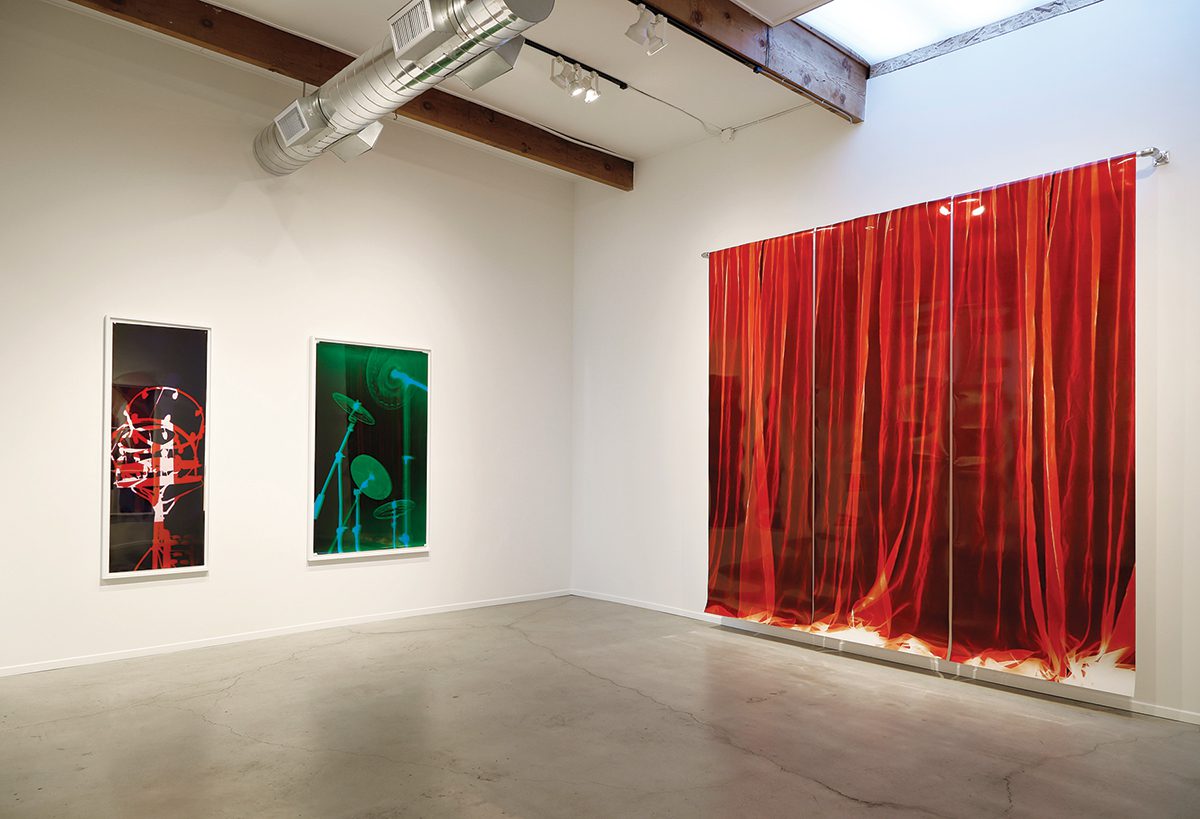When in 2002 Justin Jampol founded the Wende Museum, dedicated to preserving cultural artifacts of the Cold War (1945-1991), few could have foreseen the bittersweet circumstances of today’s geopolitics, circumstances that have conspired to make the institution and its archive of more than 100,000 objects more relevant than ever. As it celebrates its 15th birthday, the Wende has now moved into a new
permanent home in what had housed the historic Culver City Armory.
With the guidance of publisher Benedikt Taschen, designer Michael Boyd and architect Christian Kienapfel/PARAVANT transformed what was once an operational military intelligence site into a breezy and regal exhibition and public scholarship facility. As adaptive reuse projects go, this one is profoundly poignant, architecturally embodying the poetic symmetry of converting a space once dedicated to perpetrating the actual Cold War into a place where its cultural symbols are now housed and interpreted. This narrative is not lost on the Wende’s curatorial staff.
 Gerd Ludwig Chernobyl Nuclear Power Plant, 2011 Ukraine, Collection of Gerd Ludwig
Gerd Ludwig Chernobyl Nuclear Power Plant, 2011 Ukraine, Collection of Gerd Ludwig Maurizio CamagnaBinz – Strandpromenade, “Müther-Turm”, 2016Germany
Maurizio CamagnaBinz – Strandpromenade, “Müther-Turm”, 2016Germany Installation View. Photo: Michael Underwood
Installation View. Photo: Michael Underwood Installation View. Photo: Michael Underwood
Installation View. Photo: Michael Underwood The Wende Museum
The Wende Museum Nathan FarbBoy with Trench Coat and Sunglasses, 1977
Nathan FarbBoy with Trench Coat and Sunglasses, 1977
This resonance between the Cold War era and the present day animates the campus. It is amplified in the building’s open-display storage and conservation areas, and also in the debut exhibition, organized around the motif of locations. Cold War Spaces comprises interrelated thematic vignettes examining aspects of private, work, border, secret, utopian, changing and outer spaces within Soviet society. The Wende specializes in mixing historical and contemporary content with pop culture, design, documentary and fine art objects. With this in mind, each successive room in the open floor plan unpacks its topic with gravity and wit, charm and surprise. Electrifying correlations are generated across sightlines, expressing how the subthemes mingle to create a holistic view that engages, entertains and educates.
Chief Curator Joes Segal is understandably hard-pressed to choose a favorite among the magnitude of the Wende’s exotic treasures. Posters, movies, endless busts of Lenin and underground documentary projects are all impossibly endearing; and so much more is somber, moving and rare. But Segal acknowledges that everyone loves the spy toys—surveillance equipment that is sleek and hefty, mysterious and Cyrillic and often in fine working order. A palette of these nosy devils is featured in Cold War Spaces, along with powerful painting, activist cartography and majestic, tragic architectural photography. Nearby the gear hangs a selection of maps showing wrong information—a classic Russian strategy to confuse invaders. In fact, there is a mapping motif in both historical and interpretive works. (Coincidentally, in 1949, the Culver City Armory itself was left off maps to protect its active military status.)
“Seeing this idea grow up is so gratifying” said Jampol during a private preview of the Wende facility. “Finding its own life, its own home. And it is so exciting to be embraced by Culver City—a place known both as a center of arts and design, and also cinema, which plays such a huge part in this conversation.” It’s a bit easier for Jampol than for Segal to pick a favorite. “Those banners!” he said, beaming and pointing toward the ceiling where rows of luxurious hand-stitched flags offer slogans, crests and messages of the cause. “These textiles are where the whole collection started! They were the first things we owned, and they’ve never been shown before! They are of course political objects, but they are also things of beauty and skilled craftsmanship. But like so much of what we collect, they are orphaned objects. Where do they live? In what category? I love items that are a bit confusing.”
The reality of “private space” in the Soviet state is that nothing was truly private. Domestic scenes were often staged to give the appearance of political orthodoxy, even as quirky and stylish design objects expressed an almost Palm Springs-esque sensibility. By contrast, public spaces were for scripted behavior, political messaging, heavy-handed symbolism and strident architecture. This tense arena, however, was also the site of an increasingly visible punk-inflected counterculture that emerged in the late 1980s—exemplified in photographs by Harald Hauswald.
Work, Changing and Utopian Spaces are linked by the recurring iconography of monuments, towers, farmlands and able-bodied figures, tinged with the fog of retrospection. Outer Space, with its jaunty pride in the first cosmonaut and images from the 1950s film “Voyage to Mars,” offers a retro-futurist freshness. Border Space is the most emphatic and familiar, with fragments of the Berlin Wall as well as images of it, such as Farrah Karapetian’s map-based piece and a stylish, luminous painting showing a crop of TV antennas on the other side, emblems of ironic proximity. These are juxtaposed with immigration documents and other reminders of the restrictions on human freedoms that caused so much pain and unrest—and has so much unlooked-for resonance today.
Finally, a singular video work was commissioned for the occasion. Vessel of Change is a multimedia installation by artists David Hartwell and Bill Ferehawk, based on the real event dubbed by historians as the Seasick Summit, when Mikhail Gorbachev and George H.W. Bush met on a ship off Malta in 1989, in stormy weather, thus symbolically ending the Cold War – and punctuating the end of the Cold War Spaces show with a flourish.
Cold War Spaces is on view at the Wende Museum through April 29, 2018. More information can be found at wendemuseum.org.




